
JOURNAL OF THROMBOSIS AND THROMBOLYSIS
Scope & Guideline
Unveiling breakthroughs in thrombolytic therapies.
Introduction
Aims and Scopes
- Thromboembolic Disease Research:
The journal emphasizes research on various forms of thromboembolic diseases, including venous thromboembolism (VTE), pulmonary embolism, and arterial thrombosis, investigating their epidemiology, risk factors, and clinical outcomes. - Anticoagulation Therapy:
It publishes studies on the efficacy and safety of anticoagulation therapies, including direct oral anticoagulants (DOACs), vitamin K antagonists, and novel anticoagulants, focusing on their use in different patient populations. - Mechanisms of Coagulation and Thrombosis:
Research exploring the underlying biological mechanisms of coagulation, the role of platelets, and the genetic factors influencing thrombotic events is a core focus, contributing to the understanding of thrombosis at a molecular level. - Clinical Guidelines and Practice:
The journal provides a platform for the dissemination of clinical guidelines and best practices in the management of thromboembolic diseases, integrating evidence-based medicine into clinical practice. - Innovative Diagnostic Approaches:
It highlights advancements in diagnostic methodologies for thromboembolic diseases, including imaging techniques and biomarkers, facilitating early detection and management.
Trending and Emerging
- COVID-19 Related Thrombosis:
A significant increase in studies addressing thrombotic complications associated with COVID-19 has emerged, highlighting the pandemic's impact on thromboembolic disease research and management. - Machine Learning and Predictive Analytics:
There is a growing trend towards utilizing machine learning and predictive analytics in identifying thrombosis risk factors and outcomes, representing a shift towards data-driven approaches in clinical research. - Personalized Anticoagulation Strategies:
Emerging research focuses on individualized anticoagulation therapy, considering genetic, demographic, and clinical variables to optimize treatment outcomes for patients. - Cancer-Associated Thrombosis:
An increasing number of studies are dedicated to understanding the mechanisms and management of thrombosis in cancer patients, reflecting the critical interplay between malignancy and thromboembolic risk. - Longitudinal Studies and Real-World Evidence:
There is a trend towards conducting longitudinal and real-world studies to assess the long-term outcomes of various thromboembolic treatments, emphasizing the importance of practical evidence in clinical decision-making.
Declining or Waning
- Traditional Antithrombotic Therapies:
Research on older antithrombotic agents like unfractionated heparin and warfarin is becoming less common as newer therapies gain prominence, leading to a shift in focus towards novel anticoagulants and their comparative effectiveness. - Generalized Risk Factors for Thrombosis:
While risk factors for thrombosis were once a major focus, there is a noticeable decline in studies addressing generalized risk factors, as researchers are now more focused on specific patient populations and their unique risk profiles. - Non-Pharmacological Interventions:
Research on non-pharmacological interventions for thrombosis prevention, such as lifestyle modifications or physical therapies, is less frequently published, likely overshadowed by pharmacological advancements. - Thrombolysis Techniques:
The frequency of studies on traditional thrombolytic techniques appears to be waning, as interest shifts towards more innovative approaches and technologies in thrombectomy and catheter-directed therapies.
Similar Journals
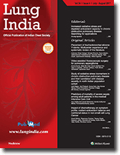
Lung India
Exploring innovations in pulmonary medicine.Lung India is a premier open-access journal dedicated to the dissemination of high-quality research in the field of Pulmonary and Respiratory Medicine. Published by Wolters Kluwer Medknow Publications, it has been forging a path in respiratory healthcare since its inception in 2004. With its impactful contributions to clinical practice and research, Lung India holds a solid position in the academic landscape, evidenced by its ranking in the Q3 quartile for Pulmonary and Respiratory Medicine as of 2023, and its Scopus rank of #99 out of 155. The journal is particularly important for researchers, clinicians, and students in India and beyond, providing a platform for the latest findings and developments in respiratory care, lung disease management, and innovative treatment methods. With a commitment to accessibility, Lung India aims to promote knowledge sharing among professionals and support the advancement of respiratory health. The journal is well-equipped to cater to a diverse audience, ensuring that vital research is readily accessible and impactful.

Journal of Vascular Surgery-Venous and Lymphatic Disorders
Elevating surgical excellence in venous and lymphatic care.The Journal of Vascular Surgery-Venous and Lymphatic Disorders, published by Elsevier, is a distinguished peer-reviewed journal dedicated to advancing the knowledge and practice of vascular surgery with a particular focus on venous and lymphatic conditions. With an ISSN of 2213-333X and a robust impact factor, this journal ranks Q2 in Cardiology and Cardiovascular Medicine and Q1 in Surgery, reflecting its high relevance and contribution to the field. Covering a wide spectrum of topics from innovative surgical techniques to the latest developments in venous and lymphatic disorders, the journal serves as a vital resource for researchers, clinicians, and students alike. It not only disseminates cutting-edge research but also promotes best practices and interdisciplinary collaboration within the cardiovascular domain. The journal is accessible to a global audience, ensuring that impactful findings reach practitioners and researchers everywhere, further elevating the standards of patient care and surgical excellence.

THROMBOSIS RESEARCH
Innovative Research for a Healthier TomorrowTHROMBOSIS RESEARCH is a leading peer-reviewed journal in the field of hematology, published by PERGAMON-ELSEVIER SCIENCE LTD. With an impressive impact factor and ranked within the top 10 of 137 in its category according to Scopus, this journal provides a critical platform for the dissemination of innovative research related to thrombosis and hemostasis. Established in 1972, THROMBOSIS RESEARCH has been at the forefront of scholarly communication, addressing key issues, findings, and advancements over more than five decades. Recognized for its high-quality content, the journal is categorized in the Q1 quartile for 2023, reflecting its influence and relevance within the scientific community. Researchers, medical professionals, and students engaged in the study of blood disorders will find valuable insights and the latest discoveries within its pages. Although currently not an open-access publication, THROMBOSIS RESEARCH remains accessible to a wide audience through institutional subscriptions, ensuring that vital research continues to inform and enhance clinical practices around the globe.
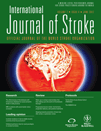
International Journal of Stroke
Bridging Research and Practice in Stroke HealthcareThe International Journal of Stroke, published by SAGE PUBLICATIONS LTD, is a leading peer-reviewed journal dedicated to advancing the field of stroke research and clinical practice. Established with a commitment to disseminating high-quality scholarly articles, this journal has rapidly progressed to achieve a prestigious Q1 ranking in both Neurology and Clinical Neurology categories as of 2023. With a remarkably high Scopus rank of #7 among 192 in Neuroscience and #16 among 400 in Clinical Neurology, it places itself firmly in the top 4% of journals in its field, reflecting its significant impact on the academic and clinical landscape. Although it does not currently offer Open Access options, the journal provides a vital platform for researchers and clinicians alike, focusing on innovative treatments, methodologies, and evolving strategies for stroke prevention and recovery. With a publication scope that spans from 2006 to 2024, the International Journal of Stroke continues to foster knowledge exchange and encourage collaboration, making it an essential resource for anyone involved in neurologic healthcare.

Annals of Vascular Diseases
Empowering Researchers in Vascular MedicineAnnals of Vascular Diseases is a leading international journal dedicated to the comprehensive exploration of vascular pathology, aimed at advancing knowledge in the field through innovative research and insightful reviews. Published by the ANNALS VASCULAR DISEASES EDITORIAL OFFICE and available in both print (ISSN: 1881-641X) and electronic format (E-ISSN: 1881-6428), this journal has embraced Open Access since 2017, facilitating wider dissemination and accessibility of vital research findings. With its focus on clinical and experimental studies relating to vascular diseases, the journal serves as a crucial platform for researchers, medical professionals, and students who seek to stay at the forefront of clinical advancements. By fostering collaboration and sharing knowledge, Annals of Vascular Diseases plays a significant role in shaping the future of vascular research and treatment strategies worldwide.
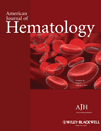
AMERICAN JOURNAL OF HEMATOLOGY
Connecting Scholars to Shape the Future of HematologyAmerican Journal of Hematology, published by Wiley, stands as a premier outlet for the dissemination of cutting-edge research in the field of hematology. With a commendable impact factor and ranked #9 out of 137 in the Scopus medicine category, this journal has established a robust presence since its inception in 1976. Operating in the Q1 quartile for hematology, it serves as a crucial resource for researchers, clinicians, and students dedicated to understanding blood disorders and advancing treatment methodologies. While the journal does not currently offer open access options, it remains highly regarded for its rigorous peer-review process and impactful contributions to the scientific community. With coverage extending into 2024, the American Journal of Hematology is committed to fostering innovation and collaboration within the hematological sciences.
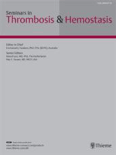
SEMINARS IN THROMBOSIS AND HEMOSTASIS
Elevating the standards of thrombosis and hemostasis research.SEMINARS IN THROMBOSIS AND HEMOSTASIS is a prestigious academic journal dedicated to advancing the understanding and practice of thrombosis and hemostasis, published by THIEME MEDICAL PUBL INC. With an ISSN of 0094-6176 and an E-ISSN of 1098-9064, this journal plays a critical role in disseminating groundbreaking research and reviews in the fields of cardiology and hematology. As of 2023, it holds a commendable Q2 ranking in both the Cardiology and Cardiovascular Medicine and Hematology categories, with Scopus ranks of #55 out of 387 and #23 out of 137, respectively, positioning it within the top percentiles of these disciplines. The journal publishes articles that bring forth innovative findings and facilitate clinical applications, making it an essential resource for researchers, healthcare professionals, and students focused on improving patient care and outcomes. Since its inception in 1974, SEMINARS IN THROMBOSIS AND HEMOSTASIS continues to evolve with the changing landscape of medical research, striving to fill the gaps in knowledge and foster an informed approach to hemostatic disorders.

EUROPEAN RESPIRATORY JOURNAL
Championing Breakthroughs in Lung HealthThe EUROPEAN RESPIRATORY JOURNAL, published by EUROPEAN RESPIRATORY SOC JOURNALS LTD, is at the forefront of advancing knowledge in the fields of pulmonary and respiratory medicine. With its ISSN 0903-1936 and E-ISSN 1399-3003, this esteemed journal has established itself as a leading platform since its inception in 1988, currently converging towards 2024. Ranked in the Q1 category for both Medicine (miscellaneous) and Pulmonary and Respiratory Medicine in 2023, it stands as the 3rd of 155 journals in its field, reflecting an impressive 98th percentile Scopus ranking. The journal boasts a rigorous selection of peer-reviewed articles that encompass innovative research, clinical studies, and reviews, thereby enhancing the understanding and treatment of respiratory diseases. Although it does not currently offer an Open Access option, the journal remains crucial for researchers, clinicians, and healthcare professionals committed to improving respiratory health across Europe and beyond. Join a community dedicated to groundbreaking research and advancements in respiratory medicine.

VASCULAR PHARMACOLOGY
Elevating the standards of vascular pharmacological research.Vascular Pharmacology, published by Elsevier Science Inc, is a leading journal in the fields of pharmacology and molecular medicine, dedicated to advancing our understanding of vascular biology and therapeutic interventions. With an impressive impact factor reflecting its significant contribution to the scientific community, this journal seeks to publish ground-breaking research that elucidates the molecular mechanisms underlying vascular function and disease, as well as the pharmacological impact of new therapeutic agents. The journal operates under a dual access model, allowing for both subscription and open access options, ensuring that vital research is accessible to a wide audience. As of 2023, it holds a prestigious position in the Q1 category for pharmacology and ranks well in molecular medicine and physiology, reflecting its high quality and relevance. Whether you are a researcher, clinician, or student, Vascular Pharmacology serves as an essential resource to stay at the forefront of cardiovascular pharmacotherapy and vascular biology.
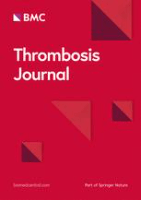
Thrombosis Journal
Pioneering open-access discoveries in thrombosis.Thrombosis Journal is a pioneering open-access publication offering critical insights into the field of hematology, contributing significantly to the understanding of thrombotic diseases. Published by BMC since its inception in 2003, this journal stands out with its commitment to accessibility and dissemination of research, ensuring that valuable findings are readily available to the global scientific community. With an impressive Q2 ranking in the Hematology category as of 2023, the journal boasts a notable presence in the Scopus rankings, positioned at Rank #73/137 in its field. Researchers, healthcare professionals, and students can benefit from a rich array of articles that encompass clinical studies, reviews, and innovative methodologies, all aimed at advancing knowledge and fostering collaboration in the field. The journal is headquartered in the United Kingdom, and its open-access model has enabled a diversity of perspectives and research innovations to flourish, solidifying Thrombosis Journal as an essential resource for those dedicated to combating thrombotic disorders.